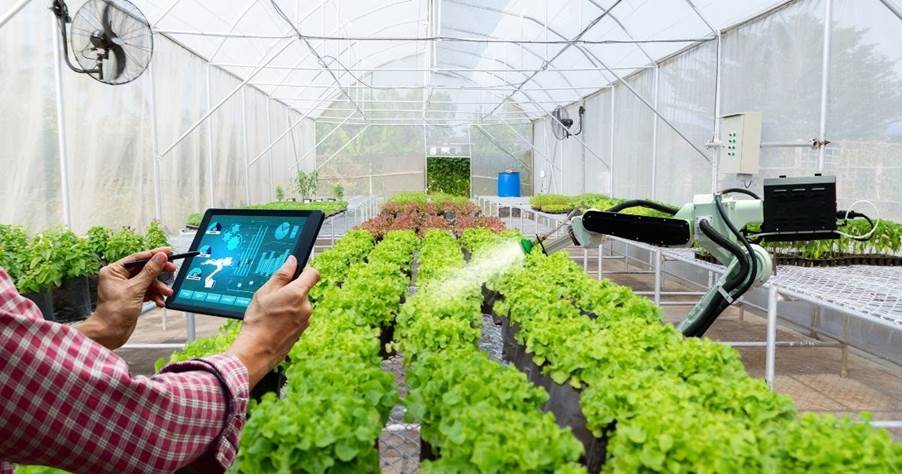The integration of imaging technology in precision agriculture is revolutionizing modern farming by providing high-resolution data for crop monitoring and resource management. As global agricultural practices shift toward data-driven decision-making, farmers and agribusinesses are increasingly adopting advanced imaging solutions to enhance productivity and sustainability. The global market for imaging technology in precision agriculture was valued at US$ 1,183.60 million in 2024. It is projected to grow to US$ 1,273.50 million in 2025 and is expected to reach US$ 2,627.40 million by 2032, reflecting a CAGR of 10.9%.
The Role of Imaging Technology in Precision Agriculture
Imaging technology, including multispectral, hyperspectral, and thermal imaging, is becoming essential in modern farming. These advanced imaging techniques allow farmers to assess crop health, soil moisture levels, pest infestations, and nutrient deficiencies with unparalleled accuracy. By leveraging high-resolution satellite images, drone-based imaging, and ground-based sensors, farmers can make proactive decisions that minimize crop loss and maximize yields.
Multispectral Imaging helps in analyzing plant vigor by capturing data in multiple wavelengths. This allows for early detection of stress factors such as drought, disease, and nutrient imbalances.
Hyperspectral Imaging provides even more detailed spectral data, enabling the identification of plant conditions at a molecular level. This technology is widely used in detecting early signs of plant diseases and contamination.
Thermal Imaging is critical for monitoring irrigation needs by detecting temperature variations in crops and soil. Farmers can use this data to optimize water usage, preventing both under- and over-irrigation.
Benefits of Imaging Technology in Agriculture
The adoption of imaging technology in precision agriculture offers several benefits, including:
Enhanced Crop Monitoring: Farmers can track plant growth and identify potential issues before they become severe, ensuring healthier crops and higher yields.
Improved Resource Efficiency: By precisely analyzing soil and crop conditions, farmers can optimize the use of water, fertilizers, and pesticides, reducing waste and operational costs.
Early Detection of Diseases and Pests: Imaging technology enables early identification of disease outbreaks and pest infestations, allowing for targeted treatments and minimizing crop losses.
Sustainability and Environmental Benefits: With precise imaging data, farmers can adopt more sustainable farming practices, reducing the environmental footprint of agriculture.
Yield Optimization: By identifying areas of poor growth and addressing deficiencies, imaging technology helps farmers maximize their output and profitability.
Market Growth and Trends
According to Persistence Market Research, the imaging technology market for precision agriculture is witnessing significant growth, driven by increasing investments in smart farming technologies and rising awareness about precision agriculture benefits. The demand for imaging solutions is particularly strong in regions with high agricultural output, such as North America, Europe, and Asia-Pacific.
Key trends influencing the market include:
Rising Adoption of Drones: Agricultural drones equipped with imaging sensors are gaining popularity for their ability to provide real-time, high-resolution data over large farming areas.
Integration of AI and IoT: The combination of artificial intelligence (AI) and Internet of Things (IoT) with imaging technology enhances data analysis capabilities, allowing for automated decision-making in precision farming.
Government Initiatives Supporting Smart Agriculture: Various governments are promoting the adoption of digital farming technologies, including imaging solutions, through subsidies and funding programs.
Growing Demand for Sustainable Farming: As concerns about climate change and resource conservation grow, farmers are increasingly turning to imaging technology to implement more eco-friendly agricultural practices.
Challenges and Future Outlook
While imaging technology presents tremendous opportunities, challenges such as high initial costs, technical complexities, and limited access to advanced technologies in developing regions can slow down adoption. However, advancements in cloud-based analytics, machine learning, and cost-effective imaging solutions are expected to drive widespread implementation in the coming years.
The future of imaging technology in precision agriculture looks promising, with continued innovations enhancing automation, accuracy, and efficiency. As AI-driven analytics, machine learning algorithms, and real-time imaging solutions become more accessible, farmers worldwide will be better equipped to make data-driven decisions, ensuring sustainable and profitable agricultural practices.
Conclusion
The imaging technology market in precision agriculture is rapidly expanding, offering farmers powerful tools for crop monitoring and yield optimization. With the support of industry players and stakeholders can better understand market dynamics and capitalize on emerging opportunities. As imaging technology continues to advance, its integration with AI, IoT, and smart farming solutions will further drive efficiency, sustainability, and profitability in global agriculture.

